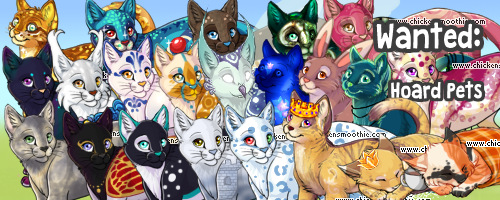Symphony Character Adoption Agency - CD + OPEN! :)
Forum rules
These adoptables are not official CS pets and cannot be added to your CS account.
Art theft is not tolerated here. Do not copy/trace/edit/use anybody's pictures without their express permission.
If you are unsure, read the full art rules here.
Once-off adoptables belong in Character Sales and Design Shops: Forum/viewforum.php?f=69
These adoptables are not official CS pets and cannot be added to your CS account.
Art theft is not tolerated here. Do not copy/trace/edit/use anybody's pictures without their express permission.
If you are unsure, read the full art rules here.
Once-off adoptables belong in Character Sales and Design Shops: Forum/viewforum.php?f=69
Re: Symphony Character Adoption Agency ♫ - v.2 - SPECIAL OPE
-- lost muse
Last edited by revenmoore on Fri Jun 13, 2014 6:21 am, edited 5 times in total.
-

revenmoore - Posts: 11024
- Joined: Wed Mar 23, 2011 12:54 pm
- My pets
- My items
- My wishlist
- My gallery
- My scenes
- My dressups
- Trade with me
Re: Symphony Character Adoption Agency ♫ - v.2 - SPECIAL OPE

Will the circle be unbroken? By and by, by and by...

Username: Mariana
Kennel Number: 205
Use:
First off, let me scream from the mountain tops how much I love this revamp! I always thought the original design was interesting and pretty, but this lineart brings it out a ton! <3 She reminds me of a character from Bioshock named Elizabeth, so I just decided to go with that name. I plan on writing about her, potentially drawing her (if I ever get back into drawing), ordering art, and making her a page on my character thread/website. (Still can't decide which one to use!) I just want to add Eli to my much loved family of characters is basically what I'm getting at here!

- About the character -


Name: Elizabeth or Eli (pronounced El-ee)
Gender: Female
Species and/or specific breed: Domestic Cat: Scottish Fold
Personality:
Elizabeth is an optimist to her core, and is a very free-spirit. She's a wanderer and does not like being stuck in the same place for too long. It shows in her personality fairly often that Eli is naive and views the world much differently than someone much more experienced would. She is easily excitable and even the smallest events can have her squealing with unbridled enthusiasm. She's just very interested in life itself. There's very little in the world that doesn't fascinate the young feline, and she strives for knowledge during her travels. When she was young, her parents didn't allow her room to expand her borders and explore like she wished, so she spent a lot of time reading and learning as much as she possibly could in her little forest home.
She has a soft-spot for the youth of the forest, regardless of species and spent a good deal of time with the younger forest-dwellers even into her teen years. This can probably be linked to her naivety and often childish traits. The idea of being a genuine adult is almost appalling to Eli. She doesn't want to be trapped in one place, or assume all the permanent responsibilities that come with adulthood. The only part of it that even mildly appeals to her is the freedom to make your own decisions and build your own life. She was too afraid to ever disobey her parents as a kid, but now she has no reason to be frightened.
Eli thinks that everyone should have the right to make their own decisions. She also doesn't like people who just sit by and let things fall into place at will. To her, that's the true definition of laziness. If you're not going to strive for the life you want and leave it up to chance, what's the point in even living at all? Living a boring, tedious, and cycled life is not on Elizabeth's agenda, and she never plans it to be.
History/Background:
"Is it everything you imagined?" The rough, sarcastic voice startles Elizabeth out of her reverie, but a small smile slides across her face regardless. She knows that the large white tom, Purity, doesn't mean his harsh words. In fact, she thinks that she's made a stellar impression on him during their travels. "Better actually." The answer comes out as a content purr rising from deep within her petite form. They perched on the edge of a dock, the ocean stretching outward beneath their paws. It was beautiful, truly. The way the vibrant colors of the sunset reflected into the waves, the scent of salt and sand filling her nostrils, all of it sent waves of happiness through the young feline.
Her companion, however, seemed less than impressed. "Don't you ever have fun, Purity?" she teased her friend. They'd met only a few months before, right after she'd left the forest she'd been born in. He was much older than she, and Eli regarded him as more of a father-figure than her own father had been. He was wise, experienced, and he was probably the only reason she was alive at this point. Plus, he'd dealt with traipsing after her through forests, swamps, lakes; you name it, Eli had drug Purity through it. The white tom had never really complained about it though. If she was honest, Elizabeth thought he had some affection for her. Why else would he spend so much time keeping her safe?
When they'd first met, she'd been bleeding from what seemed to be every part of her body. As she'd traveled a band of cats had attacked her and, despite all her protests and pleas that she was not their enemy, had practically ripped her to shreds. Later on, Purity had explained that the cats were remnants of a feline named Fright's army. They were always out for blood, even if their target wasn't hostile. After patching her up the best he could, Purity had no qualms with reprimanding her for what Eli thought had to have been a good hour. Once she was healed up she'd been eager to dash back out into the world again, and this time Purity decided to tag along.
{ - - - }
He couldn't have just let her die. Purity had caught the scent of blood in the air mere seconds before the lithe chocolate-colored she-cat collapsed right by his home. It'd reminded him too much of his brother. Of his small, and so so young, body lying lifeless on the forest floor. But, Elizabeth had been different. He'd been able to save her.
Still, Purity had to admit that he was a bit too old to be following someone so energy-filled and spry through every terrain she decided to lead him, but Elizabeth had grown on him. He'd never had kits of his own, and his only mate had been Fright. The way she had fooled him into thinking she was an upstanding cat still made Purity feel ashamed. Even more so because his inability to see the darkness in the she-cat's heart had been the reason his brother, Phantom, had been killed in the first place. "What are you thinking about?" Elizabeth asked, her head cocked curiously to the side, eyes reflected the sunset. A few seconds of silence passed before he finally decided to answer. "My brother." He said nothing more, and he guessed that his somber tone kept her from prying. When a soft sigh escaped his comrade a worm of warmth wiggled its way into his heart. She was just interested in his life. It wouldn't kill him to share a few things with her.
"He died when we were quite young."
"Oh." The addition to his statement seemed to urge her to question him further. "How did it happen?" Purity couldn't help but grimace at that.
"Remember when I told you about Fright's cats?"
"I try and remember everything you tell me, Purity."
"What I didn't tell you, is that I knew those cats personally. Fright was once my mate." It felt nice to get that out. Very few knew of his relationship with the tyrannical she-cat. It was just her sister Phoebe and another she-cat named Blair. Elizabeth is quiet for a long time before she responds.
"I thought she was evil?"
"She was very good at pretending and my brother, Phantom, knew who she really was. When he threatened to tell me, Fright killed him."
"Just like that?" Her eyes the color of the ocean before them have gone wide with shock and sorrow.
"Just like that."
Once more, silence falls over the two cats as they watch the waves lap gently at the shore.
"I never had any siblings, just parents that were too overprotective."
"I'm sure they had their reasons, Elizabeth."
"Only to hold me back and keep me in their sight."
"You almost died the first time you left your home!"
"Now you sound like my father. Although, I'd prefer you over him any day."
Purity is shocked by her statement and, again, there is only silence other than the sound of the waves.
"I'd give anything to be a father to a cat like you Elizabeth."
- Other information -
Likes:
》Traveling
》Singing
》Reading
》Blue
》Birds
》Water
》Cotton Candy
》Plushies
》Socializing
》Parties
》New Ideas
》Dresses
》Old Music
》Record Players
》Kittens
》Traveling
》Singing
》Reading
》Blue
》Birds
》Water
》Cotton Candy
》Plushies
》Socializing
》Parties
》New Ideas
》Dresses
》Old Music
》Record Players
》Kittens
Dislikes
》Being trapped
》Modern music
》Red
》Swamps
》Mud
》Traveling Alone
》Cold
》Cars
》Rainy Days
》Coffee
》Bullies
》Violence
》Thistles
》Messes
》Being Unclean
》Being trapped
》Modern music
》Red
》Swamps
》Mud
》Traveling Alone
》Cold
》Cars
》Rainy Days
》Coffee
》Bullies
》Violence
》Thistles
》Messes
》Being Unclean

Relationships:
Purity
Purity is Elizabeth's best friend/father figure. The two are practically inseparable as they continue their travels together.
Amelia
Amelia is Elizabeth's mother. She was quite controlling of Eli before she grew old enough to take care of herself.
Ezekiel
Ezekiel is Elizabeth's angelic father, literally. He is a mentor, which is another word for angel, in my character's world. He was incredibly controlling over his young daughter as she grew up and this formed a great rift between the two.
Extra Info:
- Because her father is a mentor/angel - Elizabeth shares some of his powers. One of them being the ability to sometimes show up where she is needed. However, she is not aware of this as of yet, nor is she even in the know about her father's powers.
- She is with Purity when he takes his final breath, but she likes to think that he died her father.
- When Purity is no longer with her, Elizabeth travels with Felicity. They share a love of traveling and dresses.
- She spends some time in a human home with an older man before he passes and she goes back to traveling.
- As Elizabeth gets older, her pelt becomes riddled with scars throughout it from fights.
Is there a better home awaiting, in the sky, in the sky?
3yearsuperround
Last edited by revenmoore on Fri May 30, 2014 2:55 pm, edited 7 times in total.
-

revenmoore - Posts: 11024
- Joined: Wed Mar 23, 2011 12:54 pm
- My pets
- My items
- My wishlist
- My gallery
- My scenes
- My dressups
- Trade with me
Re: Symphony Character Adoption Agency ♫ - v.2 - SPECIAL OPE
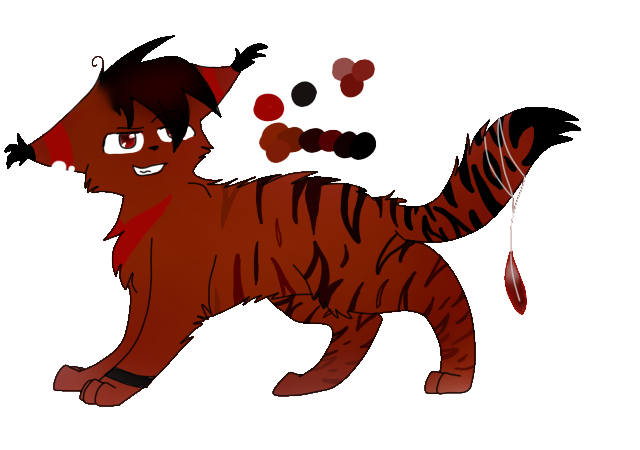
This heart ain't built for two
Username: Mariana
Kennel Number: 98
Use:
This guy has been here for quite awhile, and I've always thought he was a nice looking character, but I never had the muse to write something out for him. I've recently realized that I have very few villainous characters. Most of them are a part of the same group as well, so I'm definitely lacking in that department. This guy looks like a villain to me, and brings back memories of the main antagonist of the Warriors series, Tigerstar. My use for him is to basically make him evil...but that's no big deal right? cx He'll still be loved, regardless. I've got a lot of affection for my main evil kitty, Fright.
- About the character -
Name: Jack
Gender: Male
Species and/or specific breed: Domesticated Cat : Mutt
Personality:
When you first meet Jack you wouldn't be able to tell that in some way, shape, or form he's wondering the best way to inflict pain upon you. He's always planning and plotting, to make sure that there's no way someone can get the drop on him. However, he comes across as a kind-hearted and seemingly normal individual. One of the most prominent things one would notice upon meeting Jack is his politeness. Everything he says is punctuated by a sir, m'am, please, thank you, etc. All of this is just his form of manipulation. He earns everyone's trust and then goes in for the kill. His kindness is sometimes, but very rarely, genuine. He has a soft spot for a select few individuals. (Will elaborate on that in history and relationships!)
Jack will do just about anything to get ahead of everyone else. Life's just a huge game to him, and he's always looking for the best ways to cheat. He's not a fan of getting his own paws dirty, and has a group of cronies to do that for him. Most of them follow him out of a mixture of fear and awe, while others hope to gain power if Jack happens to take a liking to them. He doesn't treat his followers badly, either. Following him means shelter, food, and safety and for a lot of cats, that's more than enough. Jack has an odd need to give a nickname to everyone he meets. Presumably because he can't be bothered to remember their real name.
It doesn't take Jack long to judge others. He either likes you or he doesn't. There's no neutral ground with him. Friend or foe, those are your choices. Unlike many villains, Jack is well aware of his bad behavior and morality, he just doesn't care. Again, he'll do anything to be the man on top.
Being on Jack's good side does have its perks. He greatly values loyalty and hard workers, and will repay anyone who does him a favor. If you happen to be so lucky that you get to see his better traits, you'd find that he's capable of caring for others...if they remain on his side, anyway.
“There weren't any villains though. The world was just complicated in various ways, and there weren't any obvious villains to be found. It was excruciating.”
― Tatsuhiko Takimoto
History/Background:
Out of everything in the whole world, Jack was sure he hated being bored the most. He was ambitious and had a need to keep progressing, but nothing good had come from their stake out in alley thus far. The only thing he'd succeeded in was angering his mate, Lucy. He'd only killed one cat that'd gotten in their way. If anything, that deserved a gold star! The body count was usually much higher. But no, his gray pelted girly had gotten a knot in her fur and stalked off somewhere because of it. Lucy had chosen to follow him. And while Jack didn't really want her to leave, he wished she'd get used to how he operated. How a cat so rigid in her morality had seen anything in him was baffling, but, then again, so was the ruse he put up when meeting other cats. She'd fallen for that first and then she'd fallen for him. "Hey boss, when are we going to get out of here?" The question arises from Claw, some cat he'd picked up from a disbanded gang in one of the forests they'd traveled through. He was lacking in brains, but was quite the brute and had proved himself to be quite useful to Jack.
"Soon as that coward Dean shows up," Jack snorted. He was tired of waiting on the tabby tom. Dean had heard that he and the rest of his group ran jobs, and had wanted him to check up on his daughter back in the same forest that Jack had found Claw in. One of his members had given Dean the information, but the sly cat hadn't paid them yet! He owed them prey, and plenty of it. At this point, Jack wasn't sure he even played on letting him out of the alley with his heart still beating. "But I'm tired of waiting. You stay here and wait for him to show up, I'm going to go find Lucy." Jack can't ignore the pang of worry he has for his mate. No matter what else he may feel, he still loves her.
It doesn't take Jack long to find Lucy. She never roams far when she's angry because she always comes back. In her time away, she'd hopped up onto a low roof. Jack guessed it's one of those "bars" that humans always come out of incoherent. It's ridiculous, really. She doesn't say anything as he sits beside her and curls his tail over her back. "I-" She immediately cuts him off. "Don't. You're not sorry." Ouch, that stings a little. Jack kept that thought to himself.
"Alright, I'm not. Never will be. I just thought you'd appreciate an apology," He shrugged indifferently and stared out across the street. Dean better show up.
"Then why do you even bother if you don't mean it?"
"I'm sorry I upset you, but I'm not sorry that I killed that cat, and I do mean that," He responded earnestly. Jack's not the loner type and Lucy is his favorite follower. Her anger is never long-lasting, but he still doesn't want her angry at him at all. It tends to take the fun out of his day. Lucy sighed and Jack knows it's one of her 'I can't believe I'm forgiving him, again' sighs. He's grown accustomed to her stages of anger. They're outburst, run away, forgive several minutes later. She's the forget and forgive type, and Jack's grateful for that.
"You really scare me sometimes, you know that? It's hard to avoid wondering what happens to me if I get in your way." Melancholy all but drips from her voice. Jack doesn't think he'd hurt her...but what if she did get in his way? His urges to harm others were not uncontrollable, but that doesn't mean he'd necessarily want to resist hurting Lucy if worse came to worse. The idea of her blood on his paws is nauseating, though. The thought of anything bad happening to her at all make his stomach do nervous little flips. Those two things are enough to confirm that, no, he wouldn't hurt Lucy, not ever.
"I won't hurt you. You really think I could do that to you? Some trashy alley cat is one thing, girly, but you're a whole other story. Doesn't matter what you do. I couldn't raise a claw to stop you."
Even if it means you're going to be my Achilles heel or my downfall.
- Other information -
Likes:
✔ Crowds
✔ Winning
✔ Planning
✔ Dancing
✔ Feeling Respected
✔ Blue
✔ Purple
✔ Working
✔ Crowds
✔ Winning
✔ Planning
✔ Dancing
✔ Feeling Respected
✔ Blue
✔ Purple
✔ Working
Dislikes:
✗ Nosiness
✗ Being Ignored
✗ Red
✗ Losing
✗ Being outsmarted
✗ Birds
✗ Laziness
✗ Rules
✗ Nosiness
✗ Being Ignored
✗ Red
✗ Losing
✗ Being outsmarted
✗ Birds
✗ Laziness
✗ Rules

Extra Info:
- Lucy being Jack's weak point is, I assume quite obviously, foreshadowing. For what, I'm not sure. Either a) Lucy is going to come to her senses and bring him down or b) some other enemy is going to capture Lucy...not sure what would happen from there. The former would be fun, but I still sorta like the idea of them together so bleh. :/
- Jack truly loves Lucy.
- He's well aware that Lucy probably suffers from Stockholm Syndrome and he also knows that it's probably what keeps her with him.
- Jack grew up in a household consisting of, often drunk (explaining his disdain for bars), abusive humans.
- He doesn't like forests as well as cities. Mostly because he'd rather eat human food than fresh prey.
- The cat named Dean mentioned in the story is the father of my fursona Phoebe, and Jack really doesn't let him out of the alley alive.
So run away, run away, 'cause I'm no good for you.
3yearsuperround
Last edited by revenmoore on Sun Jun 08, 2014 10:53 am, edited 8 times in total.
-

revenmoore - Posts: 11024
- Joined: Wed Mar 23, 2011 12:54 pm
- My pets
- My items
- My wishlist
- My gallery
- My scenes
- My dressups
- Trade with me
Re: Symphony Character Adoption Agency ♫ - v.2 - O-P-E-N
"With a face as good as mine who would ever think I'm up to no good?"
Wait dear
The time is getting late here
I'm all washed up
and graced with faint applause
Dressed in a cheap facade
I'm looking for a place I'll never see again
A night turns to a day
A street I've never walked on
I was never here
Just a faint reflection
A day turns to a month
A second of affection
I was never here
Just a faint reflection
Faking
There's nothing here worth taking
Just my reflection fading on the wall
Not the fairest one of all
I'm looking for a place I'll never see again.
A night turns to a day
A street I've never walked on
I was never here
Just a faint reflection
A day turns to a month
A second of affection
I was never here
Just a faint reflection
The time is getting late here
I'm all washed up
and graced with faint applause
Dressed in a cheap facade
I'm looking for a place I'll never see again
A night turns to a day
A street I've never walked on
I was never here
Just a faint reflection
A day turns to a month
A second of affection
I was never here
Just a faint reflection
Faking
There's nothing here worth taking
Just my reflection fading on the wall
Not the fairest one of all
I'm looking for a place I'll never see again.
A night turns to a day
A street I've never walked on
I was never here
Just a faint reflection
A day turns to a month
A second of affection
I was never here
Just a faint reflection
Username: Queen Chrysalis


Kennel Number: 175
Use: I'd like to use him as a major villain in a story actually. (Weird I know) but there is a big MLP story I have still in the works and it actually needs a villain who can blend in with everyday ponies in terms of coloration and the like. I'm a big Alicorn fan and I know that the bad rep OC Alicorns get is sometimes absolutely grass munchblubs. I like showing the world that Alicorns aren't all bad and you only truly judge one by personality and back story. Now I realize that this is a complete and utter most nut tastic task I could undertake considering he's an alicorn with odd markings and the like but I'm willing to give this a shot. But yes I would like to be the one to art of him, get art of him and write about him.
Gender: Male
Breed/Species: Alicorn
Name: Lusacan
Origins of the name: Lusacan comes from the Dragon Age series. In that universe he was one of the Tevinter old gods. The dragon of Night widely worshiped by the Tevinter Imperium. In the events of Origins Lusacan still slumbers deep beneath the earth, not yet having been found and corrupted by the darkspawn unlike most of his fellow old gods.
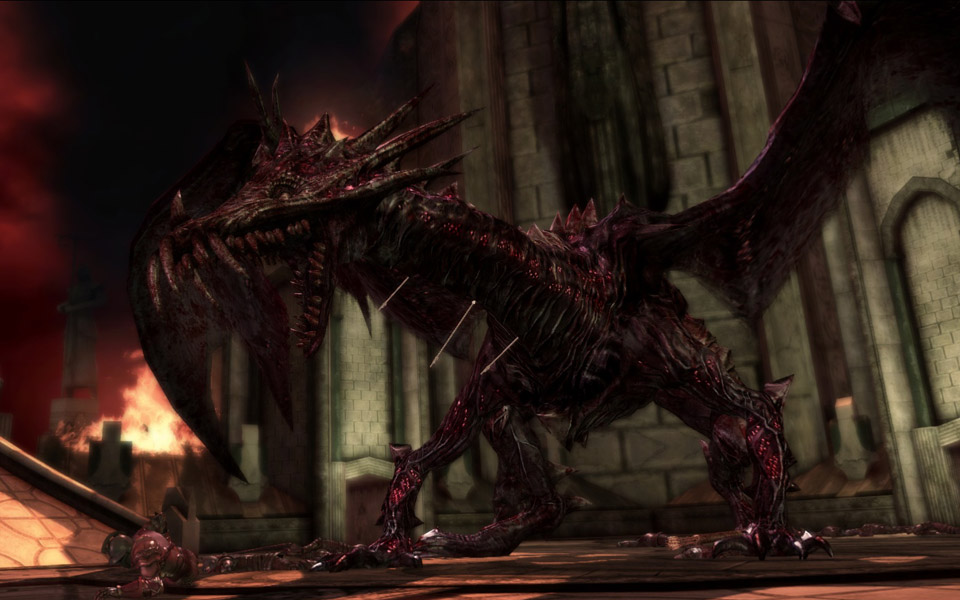
Personality:
Taurus http://www.psychicguild.com/horoscopes_ ... ign=Taurus
Underneath their cool, calm and collected exterior, Taureans differ greatly from all the other signs of the zodiac. Taureans manage to discreetly stay apart from the crowd, even though they have a well-earned reputation for being socialisers. They will let others get close, but only so close as they want them. Some claim that trying to get your point across to a Taurean, should they not want to hear you, is rather similar to talking to the trees – they simply won't budge. And, there is no such thing as an open-book Taurean. Their feelings, fears and desires often run far deeper than anyone around them would guess. Like the butterfly that chooses to remain hidden in its cocoon until it is ready and prepared to emerge, so the true Taurean spirit remains hidden behind a veneer of day-to-day activities.
The truth is, when Taureans manage to operate very adequately on their own form of automatic pilot, they can switch off from the world around them very efficiently. And when they do switch off, they are actually gathering in their inner reserves to deal with the outside pressures.
Lusacan is charming and charismatic. A real ladies stallions by all means. He's also not your traditional handsome bad guy, he doesn't abuse his followers in any way. He respects all of them even down to the messengers or errand colts/fillies. This Alicorn doesn't take kindly to bullies or goody two shoes and will do all he can within his physical limits to crush them into nothing. Lusacan can be disdainful at times with a hint of sarcasm thrown in for kicks. He hides his feelings most of the time, opting to hide such things away rather than reveal them. Lusacan is extremely stubborn and when he has made good solid plans it's like trying to move a boulder with nothing but bare hands and brute strength. He just wont budge. Lusacan blends in with the crowd even with his odd coloration due to him acting like any other pony in their day to day life, wandering round talking others and just generally enjoying life. He's very forgiving to those that do him wrong or make mistakes in steps of his plans or even deliver a simple letter to the wrong pony. He'll pat them on the shoulder and tell them it's okay, these things happen to everyone. A very social stallion, Lusacan is often at the biggest events in equestria, the summer sun celebration, the Winter Moon Celebration and many other highly important events. Just because he doesn't like someone doesn't mean he cannot respect who they are and what they do.
History/Background: The stallion poured over the reports scouts had sent in. An ear splitting grin broke the mask of concentration on his face and the Alicorn whooped excitedly. While a bit unexpected, the invasion from the planes of Astra would push the plans a little farther back but the time to strike had come whether he liked it or not
Theme Song: [Sleepwalking - The Birthday Massacre]
Art:


It comes down to just one simple fact
Likes:
Nature
Veggies
Chocolate
Sherbert lemons
Dragons
Chess
Books
Reading
Snakes
Princess Luna
Dislikes:
Most sweets
Bananas
Horror Movies
Princess Airan
Fears:
Daddy long legs (Long legged flying insects, *shudders*)
Gryphons
Princess Celestia (This will be explained in the story)
It's time that we attack
WIP
3yearsuperround
Last edited by Queen Vivane on Sat Jun 28, 2014 7:06 am, edited 5 times in total.
Unless I post somewhere, I'm not selling/trading closed species critters.


-

Queen Vivane - Posts: 22592
- Joined: Wed May 13, 2009 11:10 am
- My pets
- My items
- My wishlist
- My gallery
- My scenes
- My dressups
- Trade with me
Re: Symphony Character Adoption Agency ♫ - v.2 - SPECIAL OPE

Username: Somber Cheza
Kennel Number:
Use:
- About the character -
Name: Monarch
Gender: Female
Species and/or specific breed: Canine
Personality:
History/Background:
- Other information -
Likes/dislikes/art, etc. [optional]:
3yearsuperround
WIP
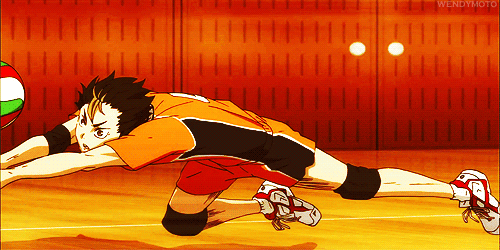
I'ℓℓ gυαя∂ уσυя вαcкѕ ωιтн муLIFE ɪғ I ʜᴀᴠᴇ ᴛᴏ﹗
-

Relamune - Posts: 4442
- Joined: Wed Jan 06, 2010 12:47 am
- My pets
- My items
- My wishlist
- My gallery
- My scenes
- My dressups
- Trade with me
Re: Symphony Character Adoption Agency ♫ - v.2 - SPECIAL OPE
Username:
- Oh hi there! My username is SabjeBammie, but I think you'll know me by now
I am a big character lover, planning to use my horse characters more activily soon. Sometimes I play chess, I roleplay a little, I love writing and doing art.
Kennel number:
- *takes a peek*
Mikey is in kennel number 29
Use:
- I want to make Mikey one of my horse characters. Spoil him with art, write some stories, and some day let him become a proud father. He will be loved, he won't collect dust.
He will be added to my Weebly, where I keep all my beloved characters. Since I spend a lot of time and effort on my forms I'll also add him to my success stories. I use those forms for inspiration, but also to show others who need a little help with their forms. Most find it very helpfull to look at them. I hope this form can inspire others too to win the character they love.
I plan to use him as a strong and proud horse in my stories. He'll be kinda the ruler over a herd.


Namer:
- He is known as Tommi, but I want to rename him Mikey. Not sure why, the name just popped into my head when I looked at him. I often name characters that way: I look at them and the name pops up.
Most of the times I call him Mike, since he seems to prefer that name more.
Theme song:
- Rod Steward - Baby jane
Why? Because it suits him. It's his favorite song when he is riding a competition, it's great for a trot.
Gender:
- Mikey will be male (stallion). I looked at his face for a while, and he just looks like a really proud guy. I don't see many female things about him.
Sexual orientation:
- I want to keep it as realistic as possible, so he is heterosexual. He loves flirting around, but it'll take a while for him to actually fall in love with someone.
Birthdate related:
- Birthday: September 5th
Birthstone: Sapphire
Astrological Sign Virgo ♍
Breed:
- He is a Quarter Horse. The famous western breed from America. I want to use him to make some western arts and stories.
About the breed wrote:How did the Quarter Horse get his name?
Quarter horses are so called because of their speed at sprinting (galloping) a quarter-mile. Some say that the name comes from the hefty hind-quarters of the horse; others say that the breed is one-quarter each of four other breeds, including the Thoroughbred. Nonetheless, it is the quarter-mile speed which gives the quarter horse its name.
Where does the breed come from?
In 1604, the first pilgrams brought what many people believe to be the early stock for thourobreds(Arabian and Spanish based settlers and they found out that the new horse breed were the chosen mount. At only 14 hands, they wern't tall but fast, capable of raceing the quarter of a mile tracks. Some historians believe that more Spanish and Irsh part-breeds(todays Irish hunters) added height. The result was a taller animal(14.2-16hh) that was capable of working on small farms, being a sure-footed trail mount and a fast horse. Todays horse is 14-16 hh and can be any color but most commonly bay and chesnut.They are an all-purpose horse that compeats in western events, trail riding and for appendix quarter horses,steeple-chasing and raceing a quarter of a mile.
Trained for:
- Western riding. I love western riding, it's the best way to ride a horse. It's natural and it shows so much freedom, trust and elegance... He'll do great as a western horse, I'm sure he'll enjoy it!
Besides that he can also do dressage, but he prefers western. He wants to stretch his neck, not hold it up.
He is specialized for reining and western pleasure. [read below for more details]
About western riding wrote:Western riding is a style of horseback riding which evolved from the ranching and warfare traditions brought to the Americas by the Spanish Conquistadors, and both equipment and riding style evolved to meet the working needs of the cowboy in the American West. American cowboys needed to work long hours in the saddle over rough terrain, sometimes needing to rope cattle with a lariat (or lasso). Because of the necessity to control the horse with one hand and use a lariat with the other, western horses were trained to neck rein, that is, to change direction with light pressure of a rein against the horse's neck. Horses were also trained to exercise a certain degree of independence in using their natural instincts to follow the movements of a cow, thus a riding style developed that emphasized a deep, secure seat, and training methods encouraged a horse to be responsive on very light rein contact.
Though there are significant differences in equipment, there are fewer differences between English and Western riding than appear at first glance. Both styles require riders to have a solid seat, with the hips and shoulders balanced over the feet, with hands independent of the seat so as to avoid jerking the horse in the mouth and interfering with its performance.
"Western Riding" is also the name for a specific event within western competition where a horse performs a pattern that combines trail and reining elements.

Art by unknown
Western competitive events wrote:Competition for western riders at horse shows and related activities include in the following events:
Western pleasure
The rider must show the horse together with other horses in an arena at a walk, jog (a slow, controlled trot), and lope (a slow, controlled canter). In some breed competitions, a judge may ask for an extended canter and/or a hand gallop, and, less often, an extension of the jog. The horse must remain under control on a loose rein, with low head carriage, the rider directing the horse with nearly invisible aids and minimal interference.
Reining
Considered by some the "dressage" of the western riding world, with FEI-recognized status as a new international discipline at the World Equestrian Games, reining requires horse and rider to perform a precise pattern consisting of circles at a lope and gallop with flying changes of lead, rapid "spins" (a turn in one spot on the haunches), "rollbacks" (a rapid turn immediately followed by a gallop in the opposite direction) and the crowd-pleasing sliding stop (executed from a full gallop).
Cutting
This event highlights the "cow sense" prized in stock horses. The horse and rider select and separate a cow (or steer) out of small herd of 10-20 animals. When the cow tries to return to the herd, the rider relaxes the reins and leaves it entirely to the horse to keep the cow from returning to the herd. Depending on the level of competition, one to three judges award points to each competitor.
Working cow horse
Also called Reined cow horse. A judged competition that is something of a cross between cutting and reining. A horse and rider team work a single cow in an arena, making the cow move in a directed fashion through several maneuvers.
Ranch horse
An event that, depending on breed sanctioning organization, tests multiple categories used by working ranch horses: Ranch riding, which is similar to western pleasure; Ranch trail, testing tasks performed during ranch work, often judged on natural terrain rather than in an arena; Ranch Cutting, judged the same as a cutting event; Working ranch horse, combining Reining, Roping, and working cow horse; and ranch conformation and is judged like a halter class.
Western Riding
Western Riding is a class that judges horses on a pattern, evaluating smooth gaits, flying lead changes, responsiveness to the rider, manners, and disposition.
Team penning
A timed event in which a team of 3 riders must select 3 to 5 marked steers out of a herd and drive them into a small pen. The catch: riders cannot close the gate to the pen till they have corralled all the cattle (and only the intended cattle) inside. The fastest team wins, and teams exceeding a given time limit are disqualified. A related event is Ranch sorting
Trail class
In this event, the rider has to maneuver the horse through an obstacle course in a ring. Horses must cross bridges, logs and other obstacles; stand quietly while a rider waves a flapping object around the horse; sidepass (to move sideways), often with front and rear feet on either side or a rail; make 90 and 180 degree turns on the forehand or haunches, back up, sometimes while turning, open and close a gate while mounted, and other maneuvers relevant (distantly) to everyday ranch or trail riding. While speed isn't judged, horses have a limited amount of time to complete each obstacle and can be penalized for refusing an obstacle or exceeding the allotted time.
Halter
Also sometimes called "conformation" or "breeding" classes, the conformation of the horse is judged, with emphasis on the both the movement and build of the horse. The horse is not ridden, but is led, shown in a halter by a handler controlling the horse from the ground using a lead rope.
Halter Showmanship
Also called (depending on region, breed, and rule book followed) Showmanship at Halter, Youth Showmanship, Showmanship in-hard or Fitting and Showmanship - In showmanship classes the performance of the handler is judged, as well as the cleanliness and grooming of horse, equipment and handler's attire, with the behavior of the horse also considered part of the handler's responsibility. The competitor is judged on his or her ability to fit and present the halter horse to its best advantage. The horse is taken through a short pattern where the horse and handler must set up the horse correctly at a standstill and exhibit full control while at a walk, jog, turning and in more advanced classes, pivoting and backing up. Clothing of the handlers tend to parallel that of western pleasure competition. Halters are leather ornamented with silver. Showmanship classes are popular at a wide range of levels, from children who do not yet have the skill or confidence to succeed in riding events, to large and competitive classes at the highest levels of national show competition.
Hairpins
For each mood he has a diffrent hairpin for his manes and tail. Depending on his mood he'll put one in. They each have their own color and meaning and he never loses them.




Art by me
For each mood he has a diffrent hairpin for his manes and tail. Depending on his mood he'll put one in. They each have their own color and meaning and he never loses them.




Art by me


- Let me try to express Mikey's personality in some stories/scenes with his friends. I never used this way to express a personality before, but I think it's the best way to let you get to know him a little better.
The dinner party:
With Shanarah
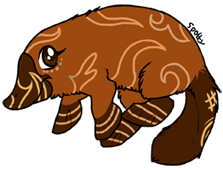
Art by Spotty
Shanarah decided to have a picnic. All Mikey's favorites were there: apples, carrots, a few sugar cubes and even a pie made of fruits and graines. Mikey loved it! Normally he doesn't eat all his food, he loves to save some for later.
"I'm honored to be here," he told Shanarah. "And a little surprised. I've never met a platypus before."
Shanarah giggled. "There aren't many of my kind around. Do you often eat with others?"
Mikey shook his head. "No, but I want to. I don't like being alone too long, it's much more fun to have others around. And look at all this great food! With friends around every meal turns into a party right away. You wouldn't just throw some food on a plate then, you'll put much more effort into it and enjoy it much more."
In short: Doesn't like being alone - loves being with friends - loves fruits and sweets - open to other species - social
Boardgames:
With Sherman
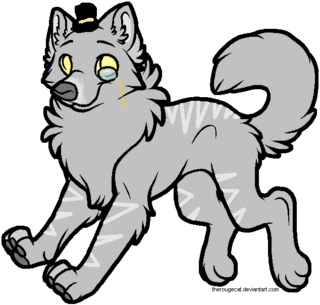
Lines by therougecat @ DA, colored by oakdenugg
Mikey didn't really understand, he just made some moves.
"Checkmate," Sherman said, moving the queen close to Mikey's king. "See? Whatever you do I can still take your king."
Mikey raised his eyebrows. "Silly game... I never really liked boardgames, to be honest."
"Let's give it one more try," Sherman said, almost begging.
Mikey sighed, he couldn't resist begging. "Alright, alright. But don't let me win, I hate it if someone feels sorry and lets me win."
Sherman smirked. "Good, 'cause I'm not the type to let others win. I like honest games."
Mikey smiled at him, looking down at the board. "So do I." He then moves the rook to the other side of the board. "Check mate."
Sherman looked at the board, a little stunned. "Whoa, you learn fast! Want to play again?"
Mikey shook his head. "I like games, but not too long. But it was a pleasure to play with you. Now, please show me your library, you said it was huge."
In short: Fast learner - smart - thinks fast - likes fairness - wants to win fairly - patient - social - calm - doesn't like doing the same thing for too long
Arguments:
With Aero

Art by me
"What are you doing here?!" Aero said, a little angry.
Mikey looked at him. "Resting in the sun," he answered calmly. "Want to join me?"
"This is my ground!" Aero said, the fur in his neck standing up.
Mikey got to his feet. "Chill, dude. This is everyone's ground."
Aero narrowed his eyes. "Get out of here! I come here to think and relax, to be alone. Get away from here!"
Mikey sighed. "Alright, no need to bite my head off. Gosh, you're rude." He walked away, leaving Aero alone. He didn't want to fight over a place to rest in the sun. He hates arguments, so he avoids them. When he can't he'll just walk away.
In short: Likes the sun - not intimidated easily - relaxed - calm - polite - avoids arguments

- Mikey was born in a small barn, with only his mother around him. He never knew his father, but he heard his father was a western riding champion. That's probably where his talent came from.
When he was almost 3 years old their owner no longer could afford the barn and had to sell it. His mother got sold first, since she was already trained. But it took a few weeks for Mikey to find a new home.
He went to a small family with a teenage girl, who had absolutely no experience with horses. Mikey didn't get the correct food and she didn't know how to train him. He got bored in the stable, and soon also very skinny.
At that point he had 2 options: go away or stay there and starve.
He chose to run away. He never knew how to live in the wild, so he had to ajust himself very quickly to survive. He had to find out what food was dangerous to eat, what animals were safe and what animal might attack him. It was very hard for him and very lonely.
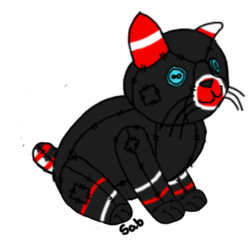
Art by me
"Hey," Mikey said.
Desmond looked up. "Cool!" he yelled, running over to Mikey. Before Mikey realized what was happening Desmond jumped up and curled up on Mikey's back. "I have always wondered what this would be like! To be on the back of a big horse. I've seen humans do it, but never a cat. And here I am! Shall we play cowboy and horse? Or we can ride in the forest. Or go to the beach! No, not the beach, I hate sand and water. And ofcourse..."
"Whoah, calm down!" Mikey said, laughing. "You are an active little fellow."
Desmond laughed. "Yeah, I love making friends, but sometimes I just keep talking. Where are you going? You look tired and like you could use some food. Why don't you come with me? Then you can sleep and eat, and we can have more fun later."
Mikey laughed. Why not go with him? At least he wouldn't be alone anymore.
He decided to come along. Even today they still meet up and have lots of fun
As for the future, he hopes to be a western champion, just like his dad. Though he never met him, he knows his reputation. He wants to meet his father and compete against him, to be even better than him. And of course to know who his father is and what he's like.
Some day he wants to find his true love and have a family, but for now he wants to focus on his western competitions first.
He is looking for someone who wants to sit on his back and help him win his beloved first prize. Once he found a good person he'll cross his own limits to try and win that prize.
3yearsuperround
SabjeBammie wrote:I found the information about the breed and western riding on my computer, where I saved lots of stuff about horses ages ago. I don't know where it came from, but those are not written by me. I just rewrote it a teeny tiny bit.
Last edited by SabrinaB on Thu Jun 26, 2014 10:55 pm, edited 17 times in total.
Looking for CATS!
Currebtly cleaning up after a fire in our house!
Have: 800.000 treasure & 340 gems
Currebtly cleaning up after a fire in our house!
Have: 800.000 treasure & 340 gems
-

SabrinaB - Posts: 69233
- Joined: Wed Jun 22, 2011 10:29 am
- My pets
- My items
- My wishlist
- My gallery
- My scenes
- My dressups
- Trade with me
Re: Symphony Character Adoption Agency ♫ - v.2 - SPECIAL OPE
Dropping out
Last edited by SabrinaB on Thu Jun 26, 2014 10:56 pm, edited 1 time in total.
Looking for CATS!
Currebtly cleaning up after a fire in our house!
Have: 800.000 treasure & 340 gems
Currebtly cleaning up after a fire in our house!
Have: 800.000 treasure & 340 gems
-

SabrinaB - Posts: 69233
- Joined: Wed Jun 22, 2011 10:29 am
- My pets
- My items
- My wishlist
- My gallery
- My scenes
- My dressups
- Trade with me
Re: Symphony Character Adoption Agency ♫ - v.2 - SPECIAL OPE
Could you please let me know what I could add/ what stopped me from getting the two kennels I tried out for so I can change my forms for the better?
thanks c:
EDIT : No >.< I just realized that for both my forms I put in skeletal system. oops cx
thanks c:
EDIT : No >.< I just realized that for both my forms I put in skeletal system. oops cx
-

ayomi - Posts: 7405
- Joined: Sun Feb 10, 2013 1:24 am
- My pets
- My items
- My wishlist
- My gallery
- My scenes
- My dressups
- Trade with me
Re: Symphony Character Adoption Agency ♫ - v.2 - O-P-E-N
x
Last edited by ayomi on Wed May 21, 2014 10:51 am, edited 1 time in total.
-

ayomi - Posts: 7405
- Joined: Sun Feb 10, 2013 1:24 am
- My pets
- My items
- My wishlist
- My gallery
- My scenes
- My dressups
- Trade with me
-

ayomi - Posts: 7405
- Joined: Sun Feb 10, 2013 1:24 am
- My pets
- My items
- My wishlist
- My gallery
- My scenes
- My dressups
- Trade with me
Who is online
Users browsing this forum: MaddyxMystery, MireyaDC and 20 guests




